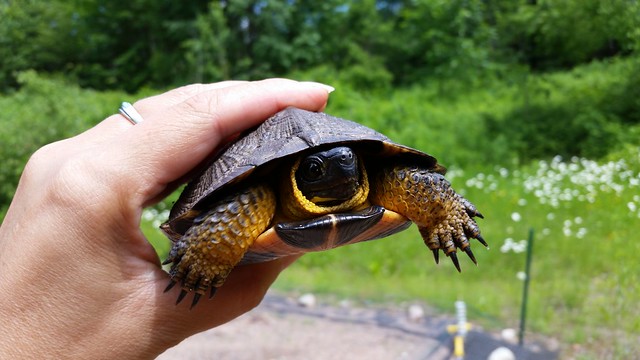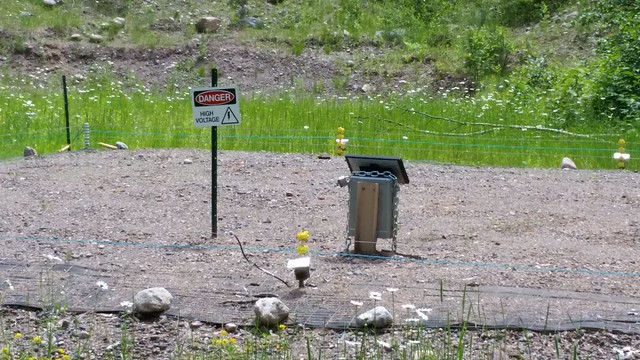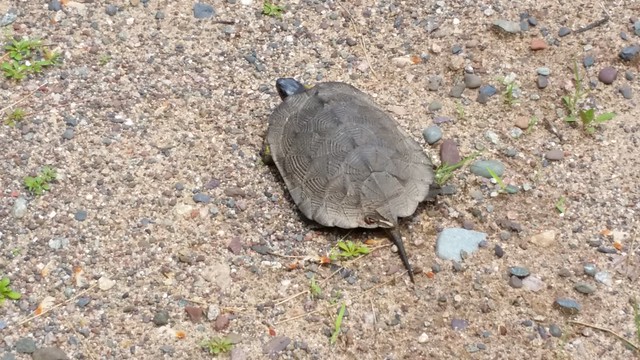
Located in northern Wisconsin, the Chequamegon-Nicolet National Forest has been called home by many species of turtles. The wood turtle, which resides in this forest, is classified as a Species of Concern and is under consideration by the US Fish and Wildlife Service to list under the Endangered Species Act.
Many factors, like disease and habitat loss, have caused wood turtles populations to suffer. Although the turtles overwinter in water, they are terrestrial for most of the year and like to make their nests in an active gravel pit on the forest where heavy machinery operates, adding to the threats they face.

Carrie Nelson, a wildlife biologist on the Chequamegon-Nicolet National Forest, explained that gravel pits are natural nesting locations for turtles, as the substrate is the right combination of sand and loam—sand for easy excavation and hold, and loam for proper drainage. At the same time, the gravel pits are used to repair and maintain roads and trails on the forest. During gravel excavations, many nests and turtles are crushed or dug out.
Nelson’s research suggested that creating nesting platforms would help protect the turtles by providing the correct substrate needed for excavating nests while allowing the Forest Service to continue using the active gravel pit. To make this idea a reality, Nelson contacted the non-profit Turtles for Tomorrow.
The platforms are made from a wooden frame filled with the sandy-loam substrate and enclosed by a three-wire, low-voltage, solar-powered electric fence. The fence is designed to keep predators, like skunks and raccoons, out of the nests. Depending on the time of the nesting season, the bottom wire can be adjusted to accommodate adult turtles or further protect hatchlings.
Nelson worked with the local Chequamegon Resource Advisory Committee to secure Title II Secure Rural Schools funding, and soon the project was underway.
With the help of other specialists, Nelson and Turtles for Tomorrow selected and cleared the site locations to prepare them for construction. The project was completed in the summer of 2017.
Since then, trail cameras have captured photos of turtles using the nesting platforms, and Nelson has personally documented wood, snapping, and painted turtles on the sites. The public also helped by alerting Nelson to wood turtle sightings, which informed her of key locations to put the nesting platforms.
All across the US, hundreds of Title II projects are connecting people with their public lands while helping to improve the national forests. The work being done for the turtles on the Chequamegon-Nicolet National Forest is just one example.


